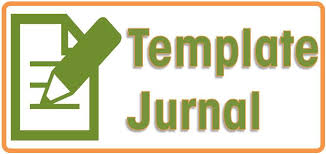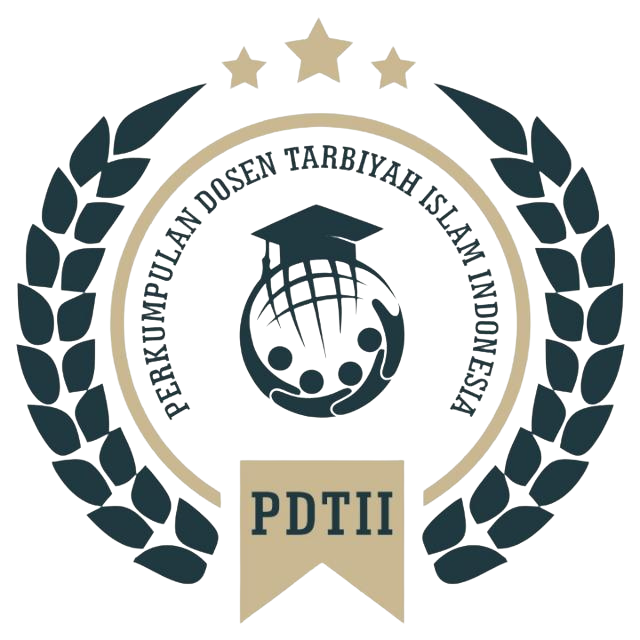MOTIVATION OF PROSPECTIVE ECONOMIC TEACHER CANDIDATES AND THEIR RELATIONSHIP WITH RELIGIOSITY
Keywords:
Religiosity, teacher candidates, motivation, pendidikan ekonomi, self-determination theoryAbstract
This research focuses on the influence of religiosity on motivation to become economics teachers among students who are studying for teachers at universities. A total of 100 students filled out the survey questionnaire that was distributed. The level of religiosity is measured using the intrinsic religiosity scale and motivation to become a teacher is based on Ryan & Deci's motivation theory, namely self-determination theory. The results of this study found that religiosity has a significant effect on motivation to become an economics teacher. However, there is no significant difference between male and female students in becoming teachers.
Downloads
References
Abu Bakar, R., Cooke, F. L., & Muenjohn, N. (2018). Religiosity as a source of influence on work engagement: a study of the Malaysian Finance industry. The International Journal of Human Resource Management, 29(18), 2632–2658. https://doi.org/10.1080/09585192.2016.1254103
Ahrold, T. K., & Meston, C. M. (2010). Ethnic differences in sexual attitudes of U.S. college students: Gender, acculturation, and religiosity factors. Archives of Sexual Behavior, 39(1), 190–202. https://doi.org/10.1007/s10508-008-9406-1
Alam, A., Fahim, A., Gupta, T., Dev, R., Malhotra, A., Saahil, Najm, S., Jaffery, K., Ghosh, M., Shah, D., Kumari, M., & Alam, S. (2022). Need-Based Perspective Study of Teachers’ Work Motivation as Examined From Self-Determination Theoretical Framework: An Empirical Investigation. SSRN Electronic Journal, 17(6), 8063–8086. https://doi.org/10.2139/ssrn.3771341
Ayob, A. H., & Mohd Nor, S. (2022). Individual Religiosity and Career Choice: Does Cultural Religiosity Moderate the Relationship? Cross-Cultural Research, 56(4), 323–344. https://doi.org/10.1177/10693971221080622
Barsh, R. (2017). Exploring the Relationship Between Teacher Spirituality and Teacher Self-efficacy BT - The Pedagogy of Shalom: Theory and Contemporary Issues of a Faith-based Education (H. Lee & P. Kaak (eds.); pp. 185–200). Springer Singapore. https://doi.org/10.1007/978-981-10-2987-5_14
Bryukhanov, M., & Fedotenkov, I. (2021). Religiosity and life satisfaction: evidence from the Russian data. Journal of Contemporary Religion, 36(2), 349–371. https://doi.org/10.1080/13537903.2021.1945753
Burgueño, R., Sicilia, Á., Medina-Casaubón, J., Alcaraz-Ibáñez, M., & Lirola, M.-J. (2017). Academic Motivation Scale revised. Inclusion of integrated regulation to measure motivation in initial teacher education. In Anales de Psicología (Vol. 33, Issue 3, pp. 670–679). Universidad de Murcia. https://doi.org/10.6018/analesps.33.3.249601
Carroll, A., Forrest, K., Sanders-O’Connor, E., Flynn, L., Bower, J. M., Fynes-Clinton, S., York, A., & Ziaei, M. (2022). Teacher stress and burnout in Australia: examining the role of intrapersonal and environmental factors. Social Psychology of Education, 25(2–3), 441–469. https://doi.org/10.1007/s11218-022-09686-7
Carver-Thomas, D., & Darling-Hammond, L. (2019). The trouble with teacher turnover: How teacher attrition affects students and schools. Education Policy Analysis Archives, 27. https://doi.org/10.14507/epaa.27.3699
Castillo, J. X., & Cano, J. (2004). Factors Explaining Job Satisfaction Among Faculty. Journal of Agricultural Education, 45(3 SE-Articles), 65–74. https://doi.org/10.5032/jae.2004.03065
Deci, E. L., & Ryan, R. M. (1985). Intrinsic Motivation and Self-Determination in Human Behavior (E. Aronson (ed.); 1st ed.). Springer Science and Business Media B.V.
Ekin, S., Yetkin, R., & Ozturk, S. Y. (2021). A Comparative Study of Career Motivations and Perceptions of Student Teachers. Turkish Studies-Educational Sciences, Volume 16(Volume 16 Issue 1), 505–516. https://doi.org/10.47423/turkishstudies.47210
Eren, A., & Tezel, K. V. (2010). Factors influencing teaching choice, professional plans about teaching, and future time perspective: A mediational analysis. Teaching and Teacher Education, 26(7), 1416–1428. https://doi.org/10.1016/j.tate.2010.05.001
Eric, M., Tabiri, F., & Danso Seth, A. (2024). University students’ religious literacy and religiosity. What is the place of academic discipline and religious affiliation? Cogent Education, 11(1), 2293487. https://doi.org/10.1080/2331186X.2023.2293487
Florez, I. A., Allbaugh, L. J., Harris, C. E., Schwartz, A. C., & Kaslow, N. J. (2018). Suicidal ideation and hopelessness in PTSD: spiritual well-being mediates outcomes over time. Anxiety, Stress and Coping, 31(1), 46–58. https://doi.org/10.1080/10615806.2017.1369260
Fokkens-Bruinsma, M., & Canrinus, E. T. (2012). The Factors Influencing Teaching (FIT)-Choice scale in a Dutch teacher education program. Asia-Pacific Journal of Teacher Education, 40(3), 249–269. https://doi.org/10.1080/1359866X.2012.700043
Gibbs, K. D., & Griffin, K. A. (2013). What do I want to be with my PHD? the roles of personal values and structural dynamics in shaping the career interests of recent biomedical science Ph.D. graduates. CBE Life Sciences Education, 12(4), 711–723. https://doi.org/10.1187/cbe.13-02-0021
Hernandez, E. F., Foley, P. F., & Beitin, B. K. (2010). Hearing the Call: A Phenomenological Study of Religion in Career Choice. Journal of Career Development, 38(1), 62–88. https://doi.org/10.1177/0894845309358889
Ismail, A. A. (2018). Kurdish religiosity: development and validation of a Religiosity Scale in a Muslim Kurdish context. Mental Health, Religion & Culture, 21(9–10), 884–898. https://doi.org/10.1080/13674676.2018.1455653
Jayakumar, T., & Verma, A. (2021). Indic Religiosity Scale: Developing and Validating an Indian Religiosity Scale. Journal of Management, Spirituality and Religion, 18(1), 35–56. https://doi.org/10.1080/14766086.2020.1824801
Lal, A., Tharyan, A., & Tharyan, P. (2020). The prevalence, determinants and the role of empathy and religious or spiritual beliefs on job stress, job satisfaction, coping, burnout, and mental health in medical and surgical faculty of a teaching hospital: A cross-sectional survey. La Revue de Médecine Interne, 41(4), 232–240. https://doi.org/https://doi.org/10.1016/j.revmed.2019.12.005
Li, N., & Murphy, W. H. (2018). Religious Affiliation, Religiosity, and Academic Performance of University Students: Campus Life Implications for U.S. Universities. Religion & Education, 45(1), 1–22. https://doi.org/10.1080/15507394.2017.1398561
Lucette, A., Ironson, G., Pargament, K. I., & Krause, N. (2016). Spirituality and Religiousness are Associated With Fewer Depressive Symptoms in Individuals With Medical Conditions. Psychosomatics, 57(5), 505–513. https://doi.org/10.1016/j.psym.2016.03.005
Mahlo, L., & Windsor, T. D. (2021). Older and more mindful? Age differences in mindfulness components and well-being. Aging & Mental Health, 25(7), 1320–1331. https://doi.org/10.1080/13607863.2020.1734915
Martela, F. (2020). Self-determination theory. The Wiley Encyclopedia of Personality and Individual Differences, Models and Theories, 369–373. https://doi.org/10.1002/9781119547143.ch61
Nell, W., & Rothmann, S. (2018). Hope, religiosity, and subjective well-being. Journal of Psychology in Africa, 28(4), 253–260. https://doi.org/10.1080/14330237.2018.1505239
Noels, K. A., Lou, N. M., Lascano, D. I. V., Chaffee, K. E., Dincer, A., Zhang, Y. S. D., & Zhang, X. (2020). Self-determination and motivated engagement in language learning. The Palgrave Handbook of Motivation for Language Learning, 95–115. https://doi.org/10.1007/978-3-030-28380-3_5
Novitasari, D., Asbari, M., Wijayanti, L. M., Hyun, C. C., & Farhan, M. (2020). The Role of Religiosity, Leadership Style, Job Satisfaction and Organizational Citizenship Behavior Mediation on Woman Teachers’ Performance. Solid State Technology, 63(6), 2953–2967.
O’Grady, K. (2008). ‘How far down can you go? Can you get reincarnated as a floorboard?’ Religious education pedagogy, pupil motivation, and teacher intelligence. Educational Action Research, 16(3), 361–376. https://doi.org/10.1080/09650790802260315
Pavin Ivanec, T. (2023). Motivation for the choice of a teaching career: comparison of different types of prospective teachers in Croatia. Journal of Education for Teaching, 49(3), 355–369. https://doi.org/10.1080/02607476.2022.2113736
Penthin, M., Christ, A., Kröner, S., Pirner, M. L., & Scheunpflug, A. (2023). Does Teachers’ Spirituality Make a Difference? The Explanatory Value of Spirituality and Religiosity for Teachers’ Professional Beliefs on Teaching and Learning. Religion & Education, 50(2–3), 159–190. https://doi.org/10.1080/15507394.2023.2185051
Penthin, M., Pirner, M. L., Scheunpflug, A., & Kröner, S. (2022). Measuring student teachers’ beliefs regarding religion in schools: piloting and preliminary validation of two newly developed scales. British Journal of Religious Education, 44(3), 281–292. https://doi.org/10.1080/01416200.2021.2007047
Pinheiro, D. L., Melkers, J., & Newton, S. (2017). Take me where I want to go: Institutional prestige, advisor sponsorship, and academic career placement preferences. PLoS ONE, 12(5), 1–24. https://doi.org/10.1371/journal.pone.0176977
Praetorius, A.-K., Lauermann, F., Klassen, R. M., Dickhäuser, O., Janke, S., & Dresel, M. (2017). Longitudinal relations between teaching-related motivations and student-reported teaching quality. Teaching and Teacher Education, 65, 241–254. https://doi.org/10.1016/j.tate.2017.03.023
Renshaw, T. L., Long, A. C. J., Cook, C. R., & Cook, C. R. (2015). Assessing teachers ’ positive psychological functioning at work : School Psychology Quarterly, 30(2), 289–306.
Richardson, P. W., Karabenick, S. A., & Watt, H. M. G. (2015). Teacher Motivation; Theory and Practice: Vol. d. Routledge.
Rożnowski, B., & Zarzycka, B. (2020). The centrality of religiosity as a predictor of work orientation styles and work engagement: A moderating role of gender. Religions, 11(8), 1–12. https://doi.org/10.3390/rel11080387
Ryan, R. M., & Deci, E. L. (2000). Intrinsic and Extrinsic Motivations: Classic Definitions and New Directions. Contemporary Educational Psychology, 25(1), 54–67. https://doi.org/10.1006/ceps.1999.1020
Ryan, R. M., & Deci, E. L. (2020). Intrinsic and extrinsic motivation from a self-determination theory perspective: Definitions, theory, practices, and future directions. Contemporary Educational Psychology, 61(xxxx), 101860. https://doi.org/10.1016/j.cedpsych.2020.101860
San-Martín, S., Jiménez, N., Rodríguez-Torrico, P., & Piñeiro-Ibarra, I. (2020). The determinants of teachers’ continuance commitment to e-learning in higher education. Education and Information Technologies, 25(4), 3205–3225. https://doi.org/10.1007/s10639-020-10117-3
Sharif, T., Hossan, C. G., & McMinn, M. (2014). Motivation and Determination of Intention to Become Teacher: A Case of B.Ed. Students in UAE. International Journal of Business and Management, 9(5). https://doi.org/10.5539/ijbm.v9n5p60
Soltesova, V., & Pleva, M. (2020). The Influence of Religious Education on the Religiosity of Roma Children in Slovakia. Religious Education, 115(5), 536–548. https://doi.org/10.1080/00344087.2020.1816248
Stark, R., & Glock, C. Y. (1965). New Denominationalism. Review of Religious Research, 7(1), 8–17.
Trott, D. C. (2012). Teaching spirituality and work: A praxis-based pedagogy. Management Learning, 44(5), 470–492. https://doi.org/10.1177/1350507612456501
Van Cappellen, P., Edwards, M. E., & Fredrickson, B. L. (2021). Upward spirals of positive emotions and religious behaviors. Current Opinion in Psychology, 40, 92–98. https://doi.org/https://doi.org/10.1016/j.copsyc.2020.09.004
Vasconcellos, D., Parker, P. D., Hilland, T., Cinelli, R., Owen, K. B., Kapsal, N., Lee, J., Antczak, D., Ntoumanis, N., Ryan, R. M., & Lonsdale, C. (2020). Self-determination theory applied to physical education: A systematic review and meta-analysis. Journal of Educational Psychology, 112(7), 1444–1469. https://doi.org/10.1037/edu0000420
von der Embse, N., & Mankin, A. (2021). Changes in Teacher Stress and Wellbeing Throughout the Academic Year. Journal of Applied School Psychology, 37(2), 165–184. https://doi.org/10.1080/15377903.2020.1804031
von der Embse, N. P., Kilgus, S. P., Solomon, H. J., Bowler, M., & Curtiss, C. (2014). Initial Development and Factor Structure of the Educator Test Stress Inventory. Journal of Psychoeducational Assessment, 33(3), 223–237. https://doi.org/10.1177/0734282914548329
Watt, H. M. G., & Richardson, P. W. (2007). Motivational factors influencing teaching as a career choice: Development and validation of the FIT-choice scale. Journal of Experimental Education, 75(3), 167–202. https://doi.org/10.3200/JEXE.75.3.167-202
Watt, H. M. G., & Richardson, P. W. (2012). An introduction to teaching motivations in different countries: Comparisons using the FIT-Choice scale. Asia-Pacific Journal of Teacher Education, 40(3), 185–197. https://doi.org/10.1080/1359866X.2012.700049
White, K. (2010). Asking sacred questions: Understanding religion’s impact on teacher belief and action. Religion and Education, 37(1), 40–59. https://doi.org/10.1080/15507390903559103
Yüce, K., Şahin, E. Y., Koçer, Ö., & Kana, F. (2013). Motivations for choosing teaching as a career: A perspective of pre-service teachers from a Turkish context. Asia Pacific Education Review, 14(3), 295–306. https://doi.org/10.1007/s12564-013-9258-9
Zúñiga, X. L., Espinoza, R. A., & Campos, H. (2015). Teacher Education Strategy That Allows Developing Motivation towards Learning in College Students from Milagro City. American Scientific Research Journal for Engineering, Technology, and Sciences, 12(1 SE-Articles), 123–135. https://asrjetsjournal.org/index.php/American_Scientific_Journal/article/view/709







